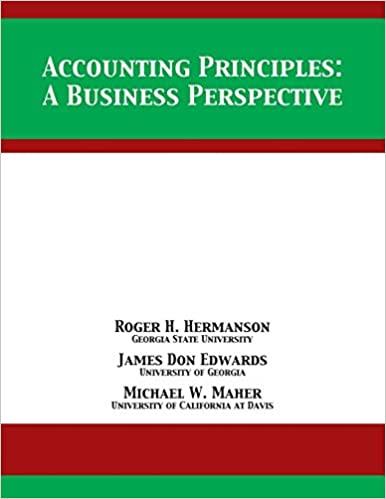Question
Queen Matilah International Airport (QMIA) is located in an Eastern European country that is a member of the European Union. It has a relatively competitive
Queen Matilah International Airport (QMIA) is located in an Eastern European country that is a member of the European Union. It has a relatively competitive tourist market and a developing industrial manufacturing area. Its primary competition is another international airport that is located about 300 km from QMIA in the same catchment area of roughly 3.5 million people. Its traffic is seasonal with three peak travel periods in June/July/August, December/January, and March/April.
QMIA has 2 runways: a 2,600-meter runway and a 3,250-meter runway that are capable of handling the aircraft types serving the market and catchment area. Its current terminal building was constructed in the mid 1970s and is a single storey facility consisting of approximately 30,000 m2. The terminal has been expanded on a piece-meal basis over the years to accommodate increased traffic demands but the facility is inadequate in size to properly handle present traffic levels. Passengers are enplaned/deplaned by ground level walkways and/or buses to and from remote aircraft parking positions.
Airport Mandate & Board Objectives
The Boards overall approach is to create and instill a commercial operating philosophy/culture and operate as a business where income and productivity are maximized, costs are controlled, and customer service is paramount.
The Board has placed special emphasis on new infrastructure and has chosen to develop a new terminal to demonstrate its commitment to high levels of customer service and enhancing the image of the region. The new terminal represents a significant financial investment, and the board has made it clear that it expects the new terminal to be a profit centre with reasonable air carrier charges and strong non-aeronautical revenues
Board objective #2: The rates and charges to the airlines using the terminal shall be fair and reasonable and in line with ICAO guidelines and competitive airports in the region.
CUSTOMER ACTIVITY FORECASTS
QMIA currently handles about 5.1 million total passengers annually. Total traffic is projected to increase at an annual rate of 4.5% over the next ten years. The current traffic is comprised of roughly 65% foreign travellers and 35% local residents. Approximately 40% of both the foreign and local resident travellers list business as their reason for travelling. This business segment has shown a growth trend of 9% over the past three years.
New Terminal Building
The new terminal facilities are located on the opposite side of the airport from the current terminal site and have direct access to a major highway. The new terminal is to be approximately 98,000 m2 in size and capable of handling 7.5 million passengers (1,740 passengers per hour). The expected cost of the new terminal building is 1,900 SDR/m2, for a total estimated cost of approximately 185,600,000 SDR.
Passengers will board their aircraft via passenger boarding bridges. In addition to the 16 contact stands, there are four remote stands close to the terminal accessed by ground level walkways for use during peak summer travel periods.
Aeronautical Equipment includes:
Common Use Check-in Counters
Automated Baggage Systems
Security Equipment
Access Controls
Airport Management Systems
Passenger Boarding Bridges
External Areas comprise:
New Taxiway
New Terminal Apron
Remote Parking Positions
| Table A: New Terminal Design Elements Airport Design Features | Capacity/Number |
| Airport Design Features | Capacity/Number |
| Passenger Capability | 7.5 million passengers/yr |
| Terminal Building area | 98,000m2 |
| Commercial/Retail Space | 9,150m2 |
| Arrivals Level | 1335m2 |
| Departures Level ( pre-security) | 1200m2 |
| Departures Level (Departure Lounge) | 6615m2 |
| Passenger boarding bridges | 16 |
| Remote Gates | 4 |
| Security Screening Positions | 6 |
| Common-Use Check-in Desks | 80 |
| Baggage Claim Carousels | 5 |
Historical Airport Revenue
The airport currently generates low levels of customer service and non-aeronautical income. A total income of 22,950,900 SDR is made up of 79% aeronautical revenue and 21% non-aeronautical income. Only 31% of non-aeronautical revenue, or 1,494,103 SDR, was generated by the current 5,000 M2 of terminal concession space during the past year. This equated to about 6% of total revenue, 299 SDR per M2 and 0.29 SDR per total passenger. Gross sales for the terminal concessions during the past year were 15,606,000 SDR, or about 3.06 SDR per total passenger.
Questions
1. Conduct a hazard identification and risk assessment exercise for the new terminal project using the Risk Assessment Matrix provided. Mitigation measures must also be demonstrated in the exercise.
2. Outline in detail the various factors that can affect capacity and delay at QMIA.
3. State the characteristics of a Class G airspace and define (a) Flight Information Region (FIR), (b) Terminal Control Area (TCA or TMA), and (c) Control zon
4. The QMIA has been expanded on a piece-meal basis over the years to accommodate increased traffic demands. The facility is inadequate in size to properly handle present traffic levels. Developing an Airport Master Plan would strategically solve this problem. List and explain the six (6) elements of the Master Plan.
5. The new terminal represents a significant financial investment, and the board has made it clear that it expects the new terminal to be a profit centre with reasonable air carrier charges and strong non-aeronautical revenues.
6. Define airport accounting and develop and implement two (2) non-aeronautical and two (2) aeronautical revenue measures to finance the project.
The processing of passengers is one of the greatest challenges of managing airport terminal operations. List the three primary itinerary segments and clearly define each.
Step by Step Solution
There are 3 Steps involved in it
Step: 1

Get Instant Access to Expert-Tailored Solutions
See step-by-step solutions with expert insights and AI powered tools for academic success
Step: 2

Step: 3

Ace Your Homework with AI
Get the answers you need in no time with our AI-driven, step-by-step assistance
Get Started


